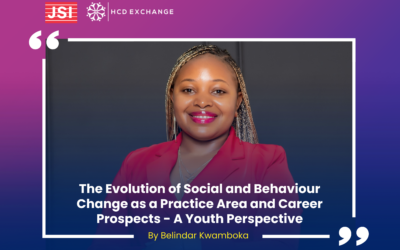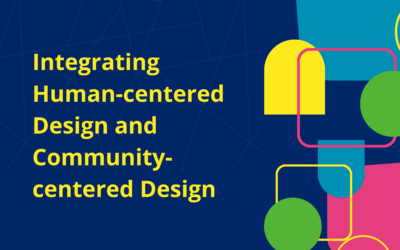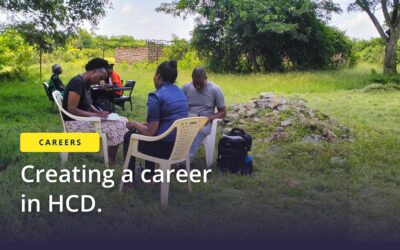
Reshmi Meyer
Senior Communications Lead, HCDExchange
Reshmi has over 15 years of experience in international development strategic communications. She joined HCDExchange in 2021 and is on a mission to make HCD language more accessible to diverse audiences.
This year’s theme for World Sexual Health Day is Let’s Talk Pleasure! There is no denying its importance as a human need. But I wanted to turn this on its head and look at what is the opposite of pleasure? . . .trauma and look at the experiences of programs using design approaches to address Sexual Gender-Based Violence (SGBV). We recently unearthed a previous learning event that we hosted back in June 2020. It still feels very relevant today as it was then. The conversations during this event looked at ways in which the cycle of adolescent Sexual Gender-based violence (SGBV) can be broken. What does that look like from an ASRH program or intervention design and implementation perspective?
Here are some broad insights that emerged:
- HCD approaches can help unpack societal and gender normative drivers of SGBV.
- Opportunities for designing interventions include intervening early with younger adolescents, focusing programming on structural drivers of SGBC, being inclusive and data-driven.
- Interventions should impact all the actors that influence adolescents’ attitudes, beliefs and behaviors.
“Childhood trauma is associated with young men’s risky and retaliatory behaviors “ – Laura Baringer, Project Director for CyberRwanda

Using participatory design to understand drivers of SGBV among youth: Insights from CyberRwanda and Men Stand Up
- Adolescent boys are not all the same: to tackle SGBV, we need to reject the simplistic archetypes that boys and men are inherently aggressive. HCD approaches can help unpack societal and gender normative drivers of SGBV.
- To design SGBV prevention interventions, it’s critical to analyze personal, social and gender drivers of how power gets asserted from early adolescence onwards.
- Opportunities for designing interventions include intervening early with younger adolescents, focusing programming on structural drivers of SGVC, being inclusive and being data-driven.
These insights were shared by Laura Baringer, Project Director for CyberRwanda and head of YLabs, Rwanda.
Insights on tackling SGBV among adolescents in Kinshasa using a socio-ecological approach
- Parental buy-in for SGBV programming takes time
- SGBV interventions should impact all the actors that influence adolescents’ attitudes, beliefs, and behaviors, and are therefore part of the socio-ecological framework. Actors include the individual, their family, school, health system, and the broader community.
These insights were shared by Amal Ben Ameur, Save the Children, Canada.
Tips on using HCD for user research
- Planning phase: snowball recruitment allows teams to find their next participant through the recommendation of someone they have already spoken with. It helps uncover insights on sensitive topics like SGBV because familiarity with the group creates a safe sharing space; there is a strong contract of confidentiality during and post session
- Learning (Research) phase: storyboarding involves visually plotting out key moments of an experience to understand the participants’ journey, and allows participants to share experiences discreetly. Fictional characters reduce pressure and make the process discreet and engaging. Chiefly, it goes beyond the individual experience to reveal traits, behaviors, and attitudes that need to be addressed in the system while developing interventions
- Testing phase: low-fidelity product/service/program is tested with stakeholders (core and secondary) to minimize risk in implementation and ensure proper contextual fit. This helps to gauge relevance of messaging and engages participants to shape the solution.
These insights were shared by Aika Janet Matemu and Sanjukta Das, Dalberg Design.
The information in this blog was extracted and edited from a webinar hosted by the HCDExchange in June 2020.




